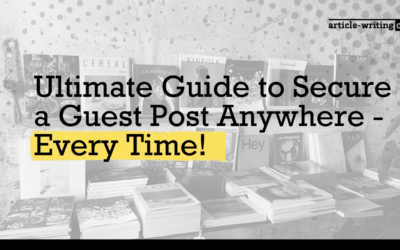The only way to land a guest posting slot is to write a convincing pitch. And what goes into a convincing pitch? Glad you asked, because develop a knack for writing awesome article pitches will help you get press in 2024.
Article pitches tie directly back into the narrative of your brand and the positioning of your brand in relation to other market players. The narrative of your brand is the backstory for why your company exists; while brand positioning – referred to as the ‘pitch angle’ in public relations terminology – is the way you choose to communicate the unique value propositions of the company, in relation to competitors, to a wider audience. Your pitch angle should be based (almost) entirely on the narrative of your brand, which designates the content themes and brand identity cultivated across platforms.
How Do I Create a Narrative Around My Brand?
The best marketers are expert storytellers. They can create tension, build anticipation, and reveal simple solutions to complex problems through the power of words and images. In creating a narrative around a brand, marketers pull from the toolkit of storytellers to explain why a company exists and what the value-driven purpose of their existence is.
The most valuable tool in the storyteller’s toolkit, as far as building brand narrative is concerned, is to present a problem affecting many people, and then present the brand or company as the solution provider. In setting the scene this way, the narrative arc is established and the value-driven purpose of the company is crystal clear. In order to create a narrative around your brand, you can experiment with a couple different brand-building strategies, including:
- A Manifesto. Manifesto’s are evergreen pieces of content that explain in bold language why the company exists. They can take many forms, but fundamental to the manifesto is a sense of urgency and idealism around the purpose of the company.
- A Vision Statement. Similar to a manifesto, though lacking its urgent fervor, a vision statement is a high-level summary of why the company exists, and what it’s core value proposition is. Unlike a manifesto, which can be a public facing document, vision statements are primarily for helping the business owner crystalize the narrative arc of their company – how it came to be, how it changed over the years, what it is doing now – and describe it in as few words as possible. Some vision statements are as short as a sentence; others can be a page or two long.
- Write an About Us Page. Another great way to figure out your brand narrative is to write an ‘About Us’ page! You might even want to turn a vision statement into content for you’re ‘About Us’ page, a page that many companies post on their site to provide visitors with a background story to latch on to. Getting the basics down will help you pull meaning and purpose out of your backstory that was unclear before.
Turn Brand Narrative Into An Interesting Pitch Angle
Writing about the vision, purpose, and growth of your company is not easy. But no one is going to be as good at it as you.
Writing a manifesto, vision statement, or about us page – or writing all three – should give you enough material to start conceptualizing articles that respond to a customer pain point while simultaneously relating back to your core narrative. If you can connect these dots in every guest posting pitch, editors of third-party publications will have a better idea for what you do, and why it matters.

David is the Founder and Director of article-writing.co, the fastest-growing content creation agency in North America. He has transformed companies by offering high-quality content that has impacted their SEO ranking, revitalized websites with engaging and industry-relevant blogs and website copy, and championed successful email campaign copy.




